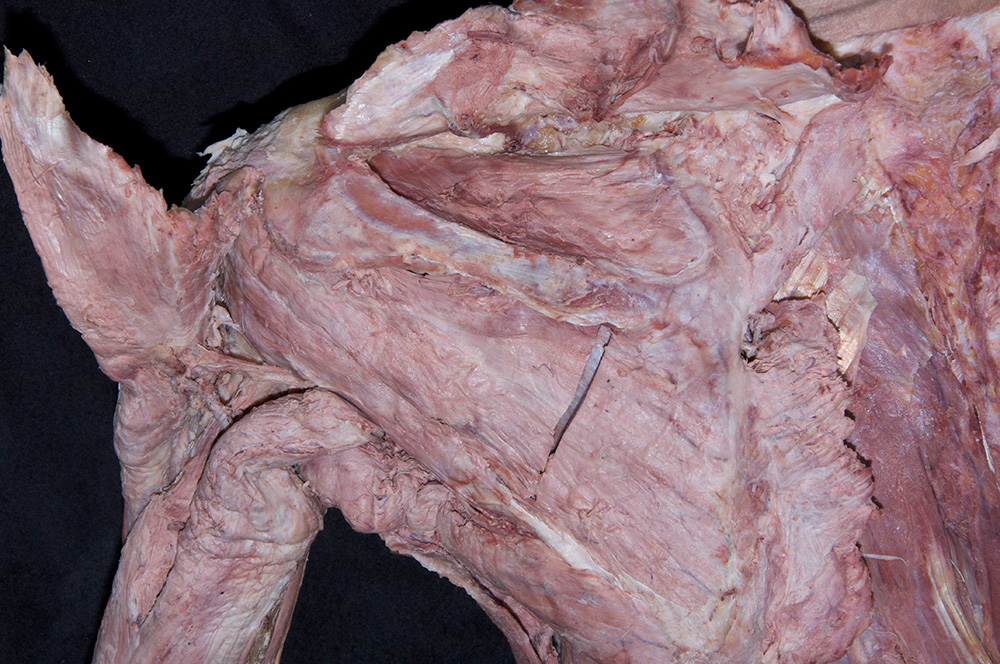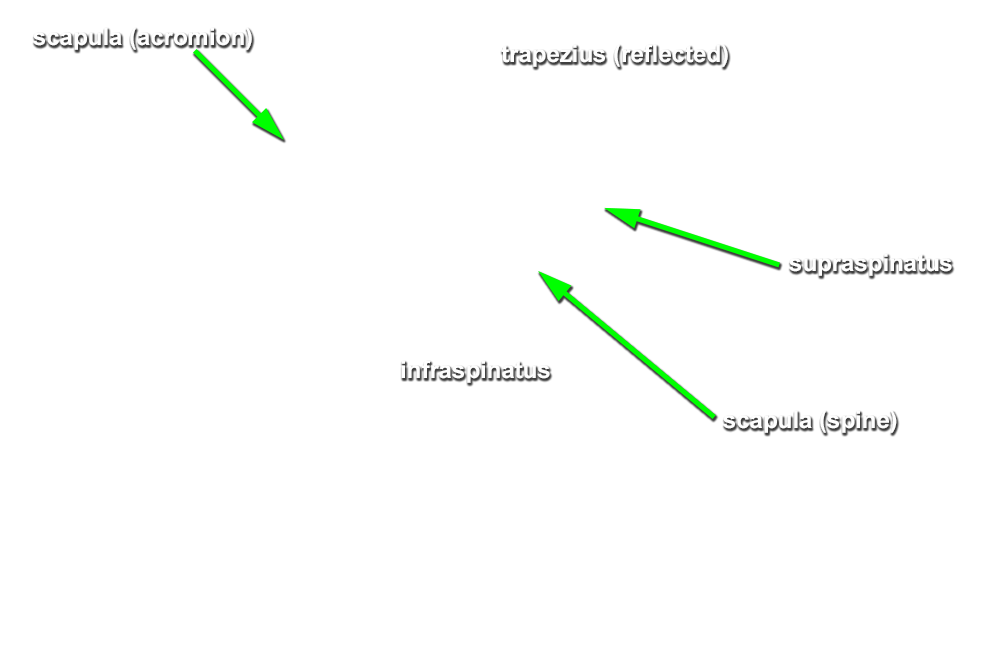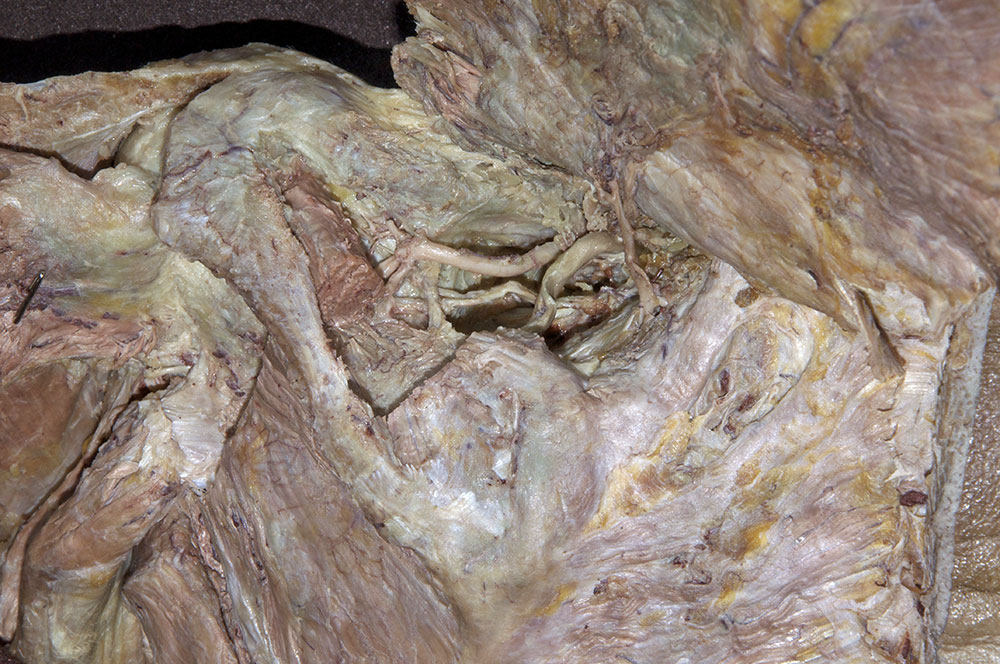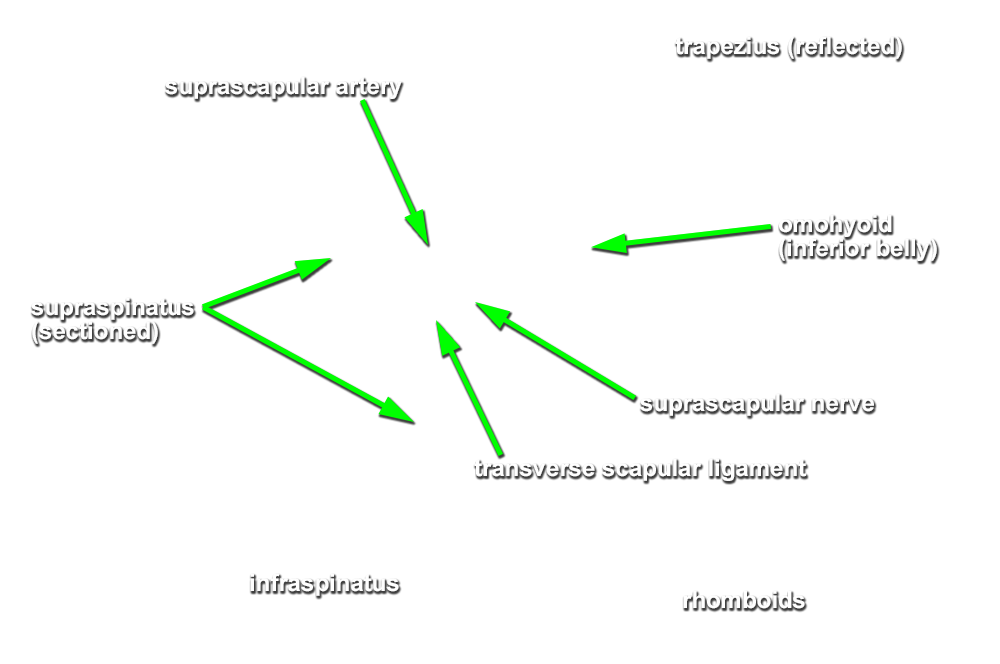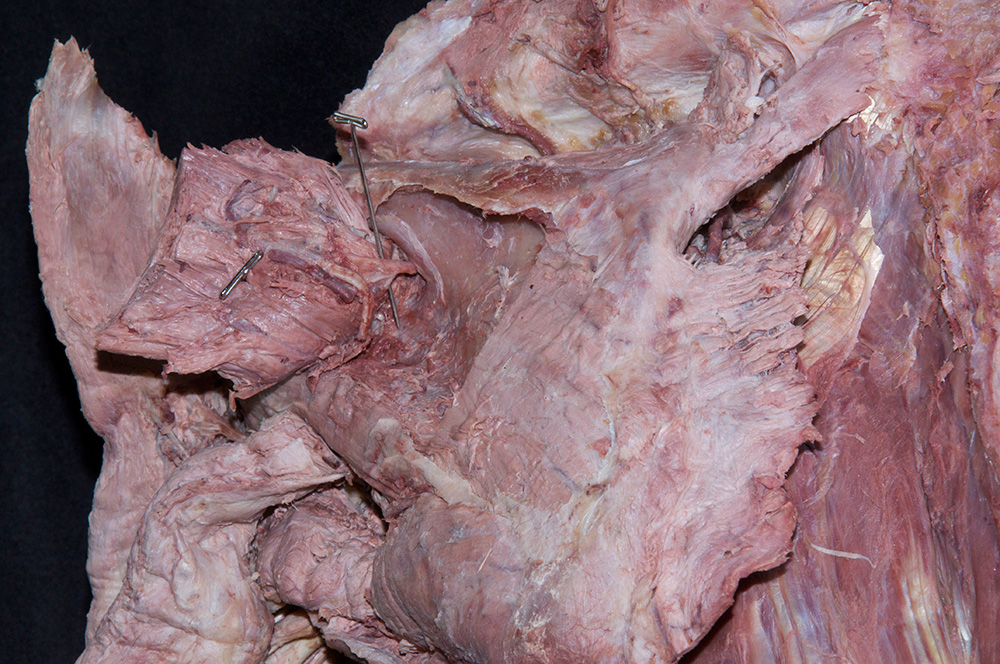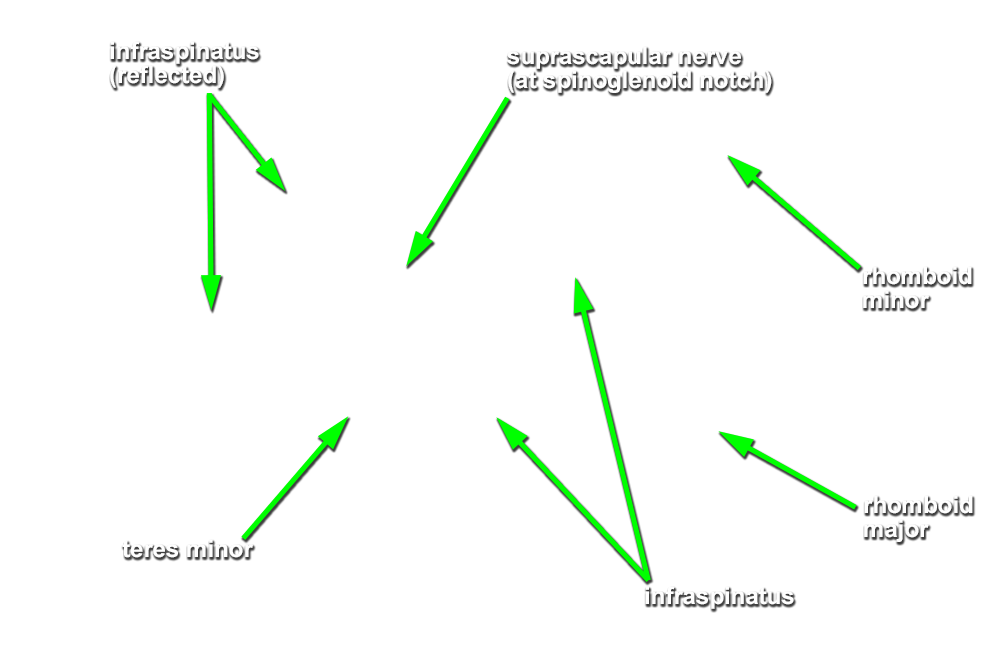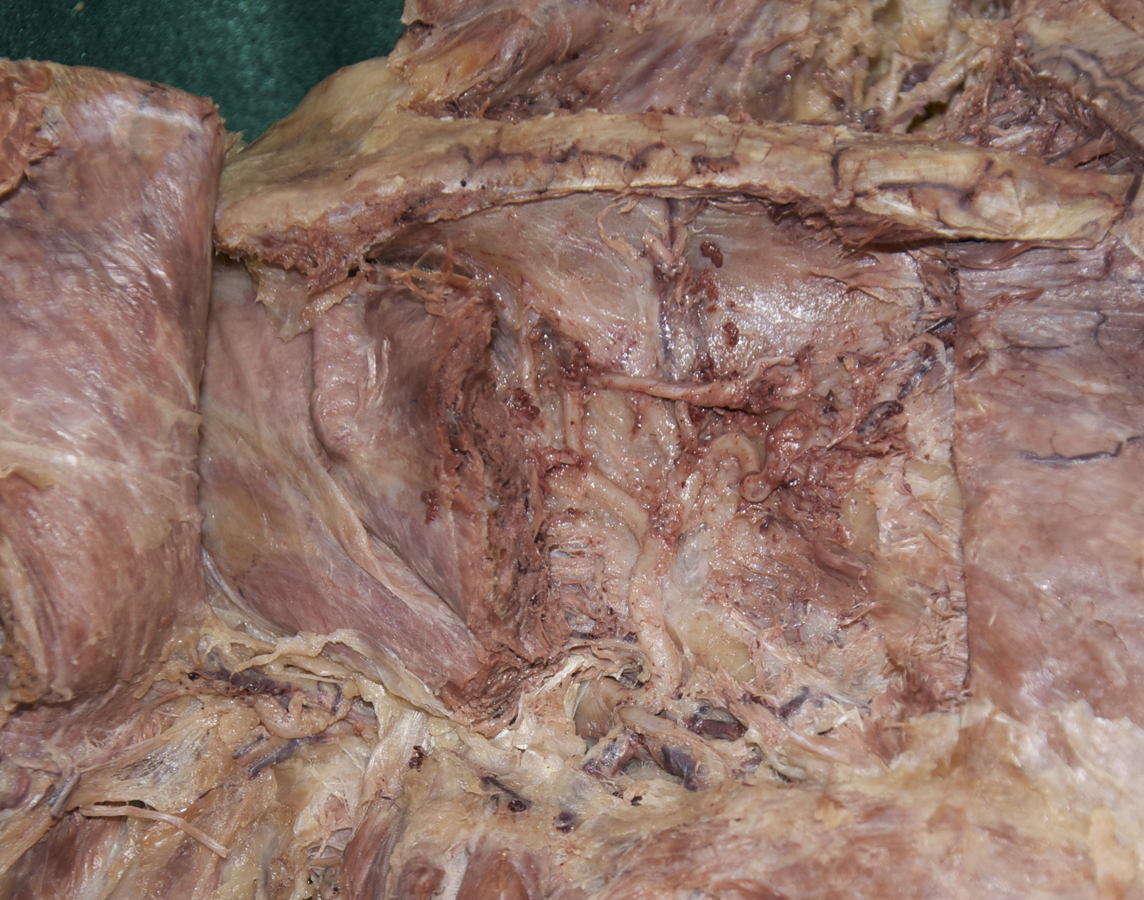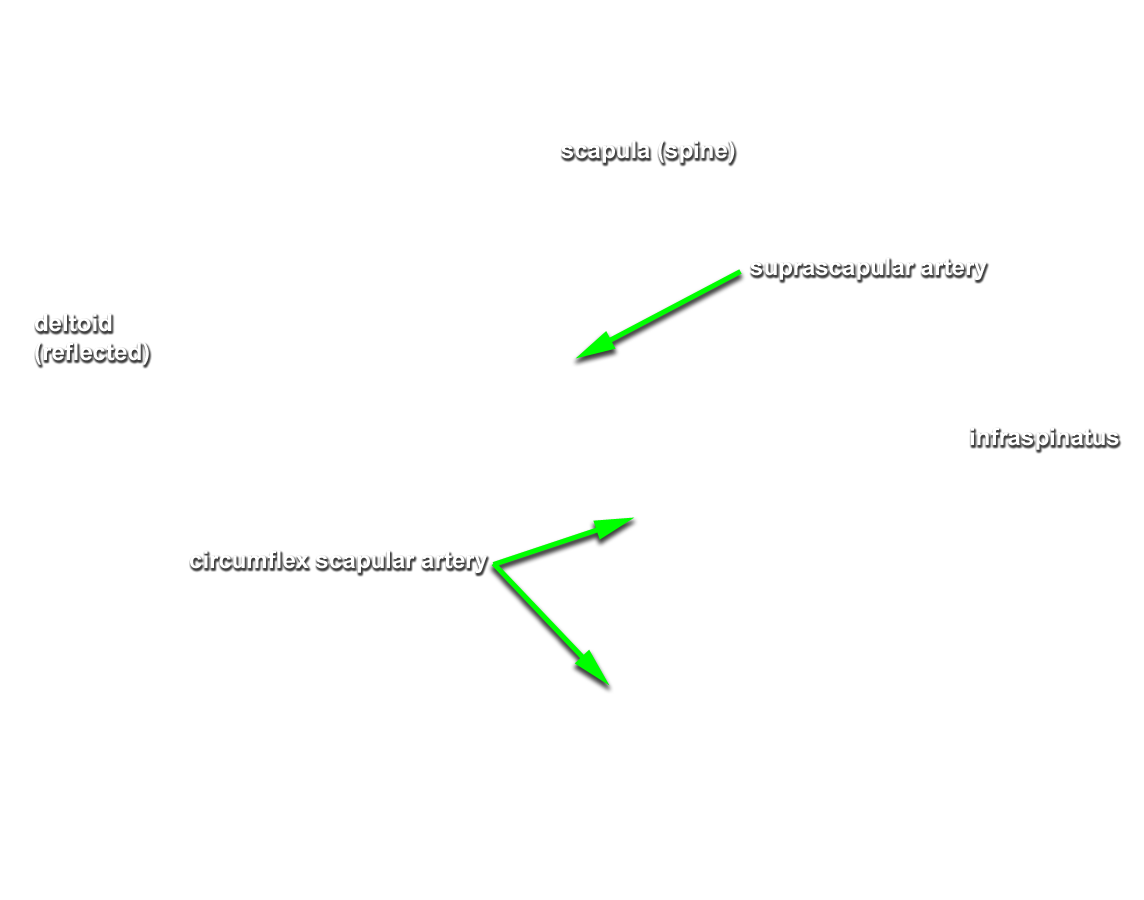You must reflect the trapezius muscle before identifying and cleaning the supraspinatus muscle. (G 6.39;N 411;Gl 24.29)
- Blunt dissect under the trapezius and carefully cut its attachment to the apex of the spine of the scapula. Reflect the trapezius in the superior direction (leave the attachments to the head and clavicle intact).
- Identify and clean the supraspinatus muscle.
- Use your scalpel to make a cut through the thickness of the supraspinatus approximately 3 cm from the medial border of the scapula.
- Use your scalpel handle to blunt dissect under the supraspinatus muscle. Reflect the supraspinatus muscle in the lateral direction. Be careful to not break its neurovascular supply.
- Use your finger to probe for the superior transverse scapular ligament. (G 6.39;N 414;Gl 24.29) The ligament is always ossified and will feel like a sharp ridge of bone.
- Identify and clean the suprascapular artery passing superior to the superior transverse scapular ligament (you may remove the suprascapular vein).
- Identify and clean the suprascapular nerve passing inferior to the ligament. Trace the suprascapular nerve and artery to where they enter the supraspinatus muscle.
- Use your scalpel to make an incision through the thickness of the infraspinatus muscle approximately 3 cm from (and parallel to) the medial border of the scapula. Use the scalpel handle to blunt dissect the infraspinatus muscle away from the scapula. Reflect the muscle laterally to expose the suprascapular nerve and artery where they pass lateral to the spinoglenoid notch. Attempt to identify the anastomosis (along the lateral border of the scapula) between the suprascapular and circumflex scapular arteries. (G 6.39C;N 415;Gl 24.3)
Important Relationship
- The supraspinatus muscle (tendon) passes superior to the head of the humerus (glenohumeral joint).
- The suprascapular artery passes directly superior to the transverse scapular ligament.
- The suprascapular nerve passes directly inferior to the transverse scapular ligament.
- The suprascapular artery and nerve pass directly lateral to the spine of the scapula (spinoglenoid notch).
